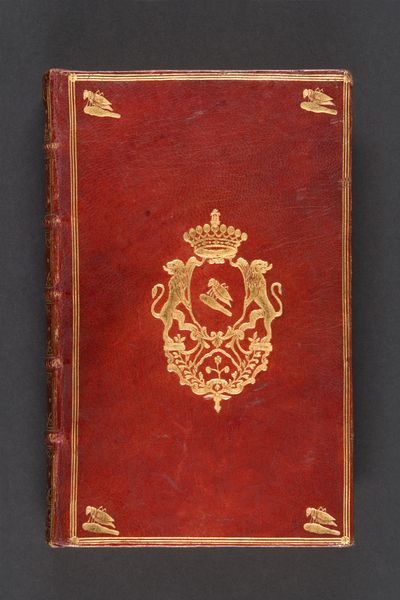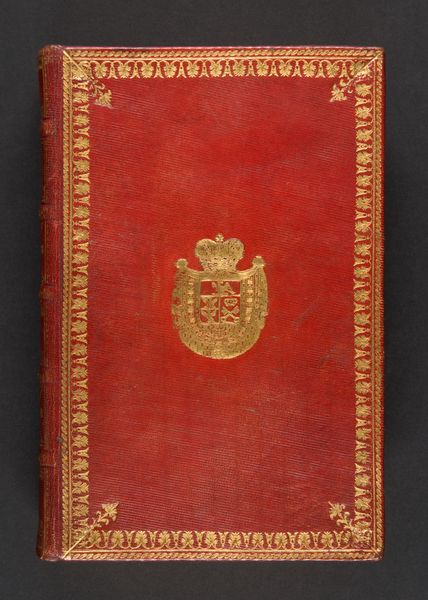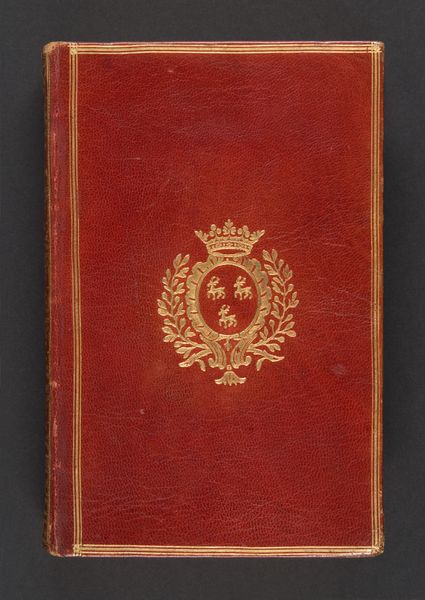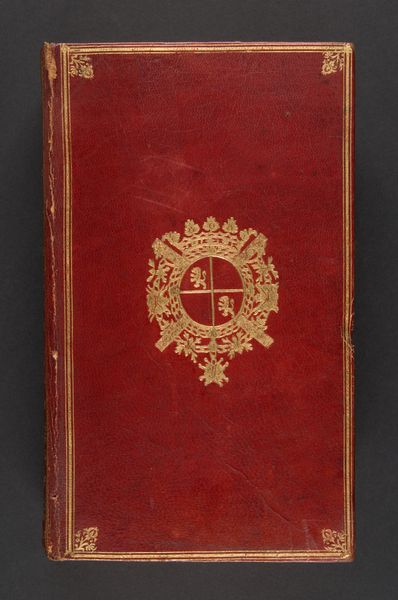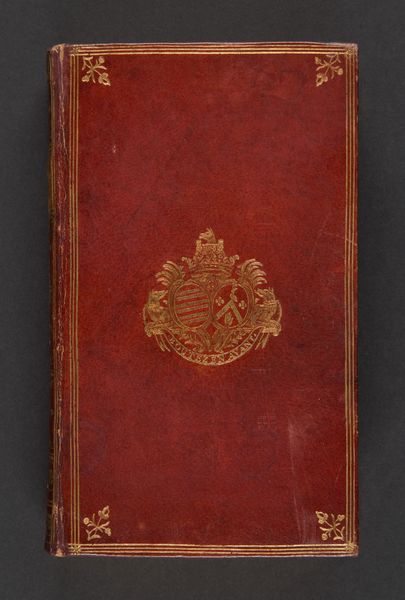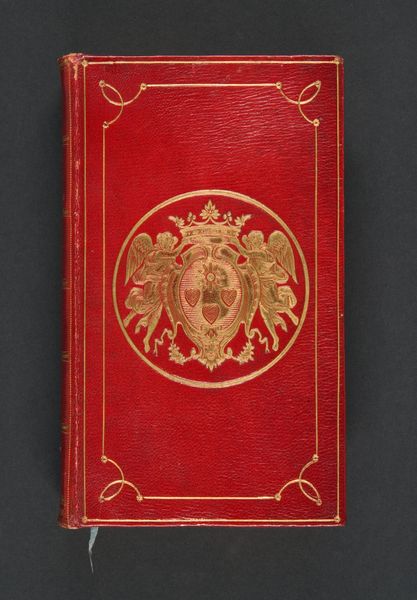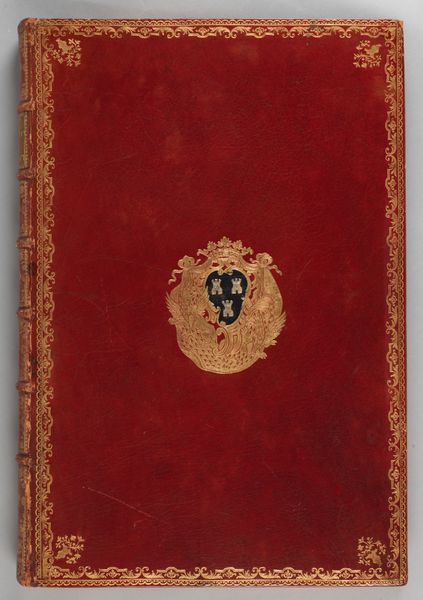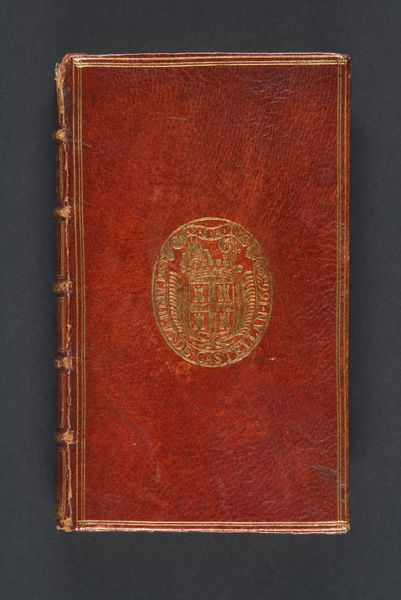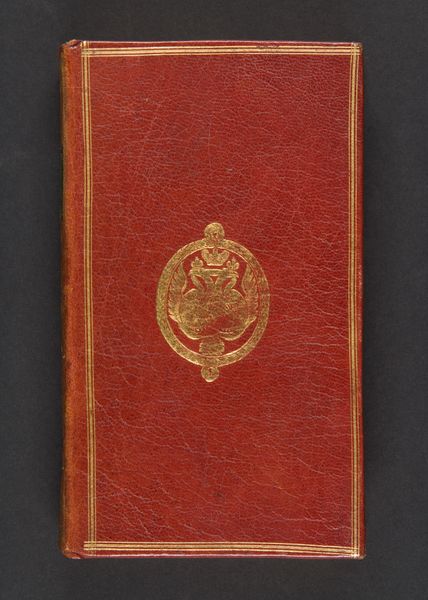
Réponse aux plaintes des protestans touchant la prétendüe persecution de France. : Où l'on expose le sentiment de Calvin, & de tous les plus célebres ministres, sur les peines dûës aux hérétiques. On découves aussi plusieurs particularitez dignes d'être sçûës, touchant la Réformation & les réformateurs 1688
0:00
0:00
gold
#
book binding
#
textured paper
#
baroque
#
gold
#
paper texture
#
embossed
#
france
Dimensions: [60], 10 [i.e. 310], [38] pages
Copyright: Public Domain
Curator: The warmth of the binding just draws you in, doesn't it? Like aged leather under a flickering candle. It whispers stories, secrets almost forgotten. Editor: Indeed. This is the cover of "Réponse aux plaintes des protestans touchant la prétendue persécution de France," published in 1688, currently held at the Metropolitan Museum of Art. The text itself translates to "Answer to the complaints of the Protestants concerning the alleged persecution in France." It's essentially an argument defending religious persecution. Curator: You know, just looking at the cover, before knowing anything about the words inside, I got a very… guarded feeling. The gold detailing is lovely, almost opulent, but it also feels very… forceful. Imposed. Editor: The gold is particularly telling, as it signifies wealth and power, directly clashing with the vulnerable and disenfranchised group targeted by this book: Protestants enduring the revocation of the Edict of Nantes and subsequent persecution. The book cover features a coat of arms; the symbolism attempts to justify oppression, cloaking it in legality and religious righteousness. Curator: The texture of the paper almost feels like it wants to be smooth, luxurious, but then it has these slight bumps, these imperfections. Makes you want to smooth it down, run your fingers over it. Which is probably part of the intention—to create a seductive object, almost daring you to ignore what's underneath the shiny surface. A kind of violence? Editor: That "seductive" texture is no accident. The book aims to persuade, to silence dissent through theological and philosophical arguments, rather than swords and prisons—although it ultimately defends those, too. It epitomizes the complex relationship between the state, religion, and individual conscience. Curator: Thinking about it that way… The book suddenly feels so…heavy. The weight of all those justifications, all that intellectual labor used to excuse human suffering… it’s staggering. I almost feel breathless just imagining what's inside. Editor: It speaks volumes about the dangerous power of propaganda and the lengths to which those in authority will go to preserve their own positions of influence. This small, ornate object embodies the terrible consequences of unchecked authority and ideological extremism. Curator: It is hard to ignore how relevant those power dynamics remain today... I almost wish the book's answers had vanished with the passage of time. Editor: Yes, art always throws these difficult mirrors back at us, across the centuries.
Comments
No comments
Be the first to comment and join the conversation on the ultimate creative platform.
